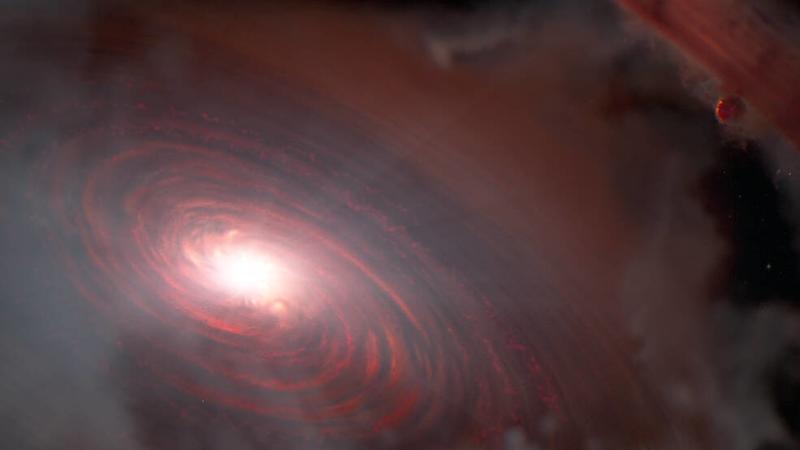 This illustration released on the website of NASA on July 24, 2023, shows the star PDS 70 and its inner protoplanetary disk. (PHOTO COURTESY OF NASA)
This illustration released on the website of NASA on July 24, 2023, shows the star PDS 70 and its inner protoplanetary disk. (PHOTO COURTESY OF NASA)
LOS ANGELES - NASA's James Webb Space Telescope has detected water vapor around a distant star in a region where rocky planets could be forming, according to the agency.
We've seen water in other disks, but not so close in and in a system where planets are currently assembling. We couldn't make this type of measurement before Webb.
Giulia Perotti, Astronomer
New measurements by Webb's Mid-Infrared Instrument have detected water vapor in the inner disk of the planetary system PDS 70, which is located 370 light-years away.
READ MORE: Stunning Webb telescope image shows closest star-forming region
The star hosts both an inner disk and outer disk of gas and dust, separated by a 8-billion-kilometer-gap, and within that gap are two known gas-giant planets.
This is the first detection of water in the terrestrial region of a disk already known to host two or more protoplanets, according to NASA.
ALSO READ: Webb telescope captures mysterious 'dark stars'
"We've seen water in other disks, but not so close in and in a system where planets are currently assembling. We couldn't make this type of measurement before Webb," said lead author Giulia Perotti of the Max Planck Institute for Astronomy (MPIA) in Heidelberg, Germany.
"This discovery is extremely exciting, as it probes the region where rocky planets similar to Earth typically form," said MPIA director Thomas Henning.


